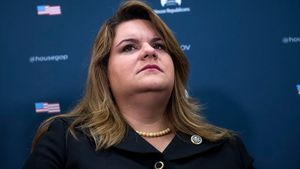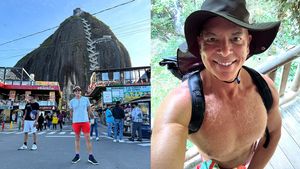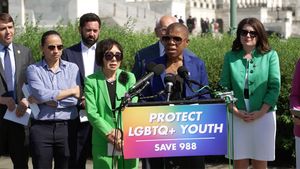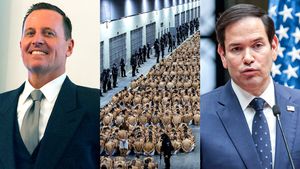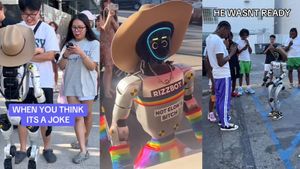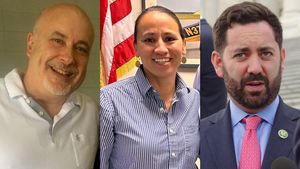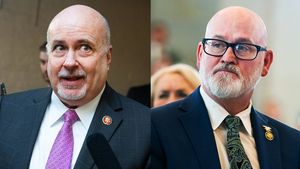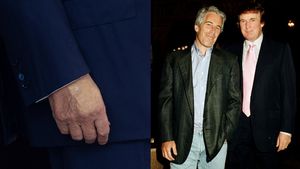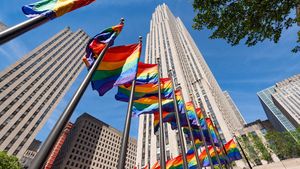Originally published by The 19th. Written by B. ‘Toastie’ Oaster, Anna V. Smith and Joaqlin Estus
All over the world, conversations about climate change and solutions to it are happening, at conferences, in documentaries, in offices, even over coffee. Climate scientists, government officials, tech entrepreneurs and others all have opinions about how humans should address the crisis, but many of them are leaving out something important: the experience and knowledge systems of the land’s original stewards — Indigenous peoples.
High Country News’ Indigenous affairs team has compiled three short profiles that center Indigenous people and their knowledge in the climate realm. The profiles showcase the efforts and expertise of people who are working, in one capacity or another, to address climate concerns through data and knowledge sovereignty, promoting the act of close listening, and helping everyone involved understand the power and truth of Indigenous ways of knowing and experiencing landscapes.
They continue the work of their ancestors and remind us to take the time to really listen — not just to Indigenous stewards like them, but also to each other, and to the environment itself.
Amelia Marchand (Colville)
by B. “Toastie” Oaster
“Indigenous people have so much to give, if people would just stop taking it,” said Amelia Marchand, senior tribal climate resilience liaison at the Affiliated Tribes of Northwest Indians (ATNI) and a citizen of the Confederated Tribes of the Colville Reservation. “For so long, our knowledge has been extracted.” Science and academia, she explained, have a history of taking intellectual property from communities that do not benefit from its use.
Through her work at ATNI, Marchand guides climate scientists in conducting research equitably — by, for example, making data sovereignty or intellectual property agreements with Native communities before making use of Indigenous knowledge. Ethically engaging with tribes, she said, requires ensuring that scientific research aligns with the priorities of tribal communities. Too often, state and federal agencies treat tribes as ordinary members of the general public. “Tribal nations are not a stakeholder group,” she explained, noting their status as governments. “Tribes are rights holders, not an interested party.”
Having recently relocated from the Colville Reservation to Kānaka Maoli lands on O’ahu, Hawai’i, Marchand now conducts trainings with tribes, universities, nonprofits and government agencies like the U.S. Geological Survey, working to develop climate strategies that include Indigenous priorities. “It’s advocating and educating at the same time,” she said.
Marchand said that while it may be possible to survive climate change without Indigenous leadership, that scenario is not a good one for the future. “It’s business as usual, with more of the same terrible history that’s led us here,” she said. A better future will require a focus on equity. “It’s interesting, the place where humanity finds itself, because we have all the tools — the technology, the wealth, the brainpower — to initiate those changes,” Marchand said. “What we lack is the political will.”
And Native leaders know how to implement traditional practices in a good way. As an example, she noted that in September, Interior Secretary Deb Haaland (Laguna Pueblo) revised four climate-related Interior Department policies, all of which now refer to Indigenous knowledge. Marchand credits “Auntie Deb” with implementing this knowledge at a federal level in a way that’s not extractive. “We, as a whole, would not be as far without her,” Marchand said.
Through ATNI, Marchand has had a hand in crafting policy resolutions that might influence states like Washington and Idaho, or perhaps pass up the chain to the National Congress of American Indians and on to the U.S. Congress. Concerning more boots-on-the-ground changes, Marchand has also cofounded the L.I.G.H.T. Foundation, a nonprofit that supports native plant conservation and gathering traditions for Pacific Northwest tribes. Working with climate sustainability students from Western Washington University, she’s used lessons about the protection of native plants and pollinators to talk to students about sovereignty, drawing attention to the braided nature of climate, conservation and Indigenous rights.
Lydia Jennings (Pascua Yaqui and Huichol)
by Anna V. Smith
The global shift toward renewable energy is fueling growing demand for copper, lithium and manganese, minerals that are often found near tribal reservations or on sacred ancestral lands. At the same time, Indigenous knowledge is increasingly sought by governments and scientists to inform land management and climate research.
Lydia Jennings’ research sits at the nexus of these two tensions: She’s a soil microbiologist studying mining and natural gas sites near tribal communities. Jennings, who is Huichol and a citizen of the Pascua Yaqui Tribe, splits her time between the very different biomes of Phoenix and Durham, North Carolina, as a postdoctoral researcher at Arizona State University’s School of Sustainability and a research fellow at the Nicholas School of Environment at Duke University. In both roles, she’s deeply interested in how federal agencies and policies include tribal nations’ priorities and concerns. “We value Indigenous knowledge when it comes to healing the ecosystem, but don’t really value Indigenous knowledge when it comes to the proposal of a new mining site,” said Jennings.
Jennings was first drawn to the stories that soils tell when she worked as an environmental toxicologist at UC Davis. Traveling from the Tijuana River to the California-Oregon border, she noticed that soil pollution varied widely. Her research focused on a major source of environmental harm: hardrock mines and the tailings they leave behind.
Part of her dissertation at the University of Arizona dealt with the Rosemont Mine in the Sonoran Desert, a proposed copper mine southeast of Tucson, on a site that overlaps the ancestral lands of Jennings’ own tribe, as well as the Tohono O’odham Nation, the Hopi Tribe and others. If approved, it would be the third-largest copper mine in the U.S. Jennings’ work underlined the importance of Indigenous rights in consultation and land management. That work catalyzed her interest in data sovereignty and the way Indigenous knowledge and information is shared. “We’re talking about all these ideas and concepts around climate change and integrating more Indigenous knowledge, and that’s a beautiful idea,” Jennings said. “We need to also know that there are rights that communities have to protect that data, to be able to steward that data in the same way that they steward their ecosystems.”
That philosophy extends to climate research and tribal consent. In her current research with the Lumbee Tribe in North Carolina, Jennings is working with Ryan Emanuel, an assistant professor at Duke University and a citizen of the Lumbee Tribe, on environmental health concerns over methane gas emissions near the community. The important thing, she said, is that “it’s work that upholds the questions and concerns a tribal nation has,” instead of being driven entirely by researchers from outside the community. “It’s all really being led from community members themselves, and those who have a much longer understanding of both problems — the challenges — but also community dynamics and community-based solutions,” Jennings said.
When facing large-scale problems like climate change or influencing federal policy, Jennings looks to the past for strength to figure out solutions. “We’re in a place where you have to make a lot of tough decisions, but it’s not the first time Native nations have had to make those decisions, and it won’t be the last,” she said. Jennings often thinks about the decisions prior tribal leaders had to make when confronting world-upending changes like colonization. “For better or for worse,” she said, “it’s a continuation of those responsibilities.”
Roberta Tuurraq Glenn-Borade (Iñupiaq)
by Joaqlin Estus
Iñupiaq Roberta Tuurraq Glenn-Borade’s passion for bringing Iñupiat knowledge to Western science stems from her childhood in Utqiaġvik, formerly known as Barrow, Alaska. “My dad was a whaling captain and a sea ice scientist, and sometimes he would take me out to where the scientists in Barrow were deploying their instruments. But I noticed while I was growing up that there is a little bit of a cultural barrier between the scientists that were coming in and our Iñupiat people,” she said.
The researchers would describe things that were already obvious to the people: “For example, explaining to us what permafrost is when we already have an understanding of what that is,” Glenn-Borade said.
She said scientists used to disregard Indigenous knowledge. In the 1970s, the federal government imposed a harvest quota of zero bowhead whales, a crucial food source for the Iñupiat, due to low population estimates. The Iñupiat knew that the population counts were wrong, because they didn’t include whales traveling under the ice. After the Iñupiat took over the count, “the quotas were updated to reflect a strong bowhead whale population, and the U.S. government began to take the voices of Indigenous folks in Alaska more seriously,” Glenn-Borade said.
In college, Glenn-Borade trained as a geoscientist and learned about research in other parts of Alaska: “I felt like I had a perspective I could share that could help bridge these two worlds.”
In January 2022, for her master’s thesis at the University of Alaska Fairbanks, Glenn-Borade published a story map — a digital map and narrative — that showcased the photos, data and voices of local observers across the state along with Western scientific information. Entries about stormy weather, for example, appeared with a chart on the multi-year trend of increasingly wet summers, as well as a vignette from Iñupiaq Bobby Schaeffer of Qikiqtaġruk (Kotzebue) from September 2021:
“We had two storms go by back-to-back, producing gobs of rain and howling winds. ... Rising river and creek waters will cause more erosion. South winds will bring in storm surge and huge ocean waves will batter the beaches and cause more erosion on permafrost hills. ... Hunting efforts have been hampered by a lot of wind and rain.”
Now, Glenn-Borade is the project coordinator and community liaison for the Alaska Arctic Observatory and Knowledge Hub (A-OK), a partnership of communities in Arctic Alaska. The hub gives observers in several villages a platform to share their observations, knowledge and expertise on Arctic environmental change with each other as well as with other scientists.
In addition to warmer temperatures, locals are seeing changes in the sea ice and in the wind, along with increased coastal storms. “Yes, we have changes that are going on,” Glenn-Borade said. “Yes, there are struggles. However, we are still able to harvest healthy animals. We’re still able to go out and practice our cultural traditions, our subsistence activities. We’re still here, and we’re going to continue to be here.
“I find hope in the strength of Iñupiat culture,” Glenn-Borade said. “That’s where I know we’re still able to have a positive attitude about things, because we still do… We’re living it.”
As far as solutions to climate change go, she said, “I have opinions about whose guidance and perspectives we should seek. For me, that’s the people who are living with these changes every day.”
Note: This article has been updated to fix a misspelling of Huichol.
This article was originally published by High Country News.
Telling Queer Indigenous Stories Through Art
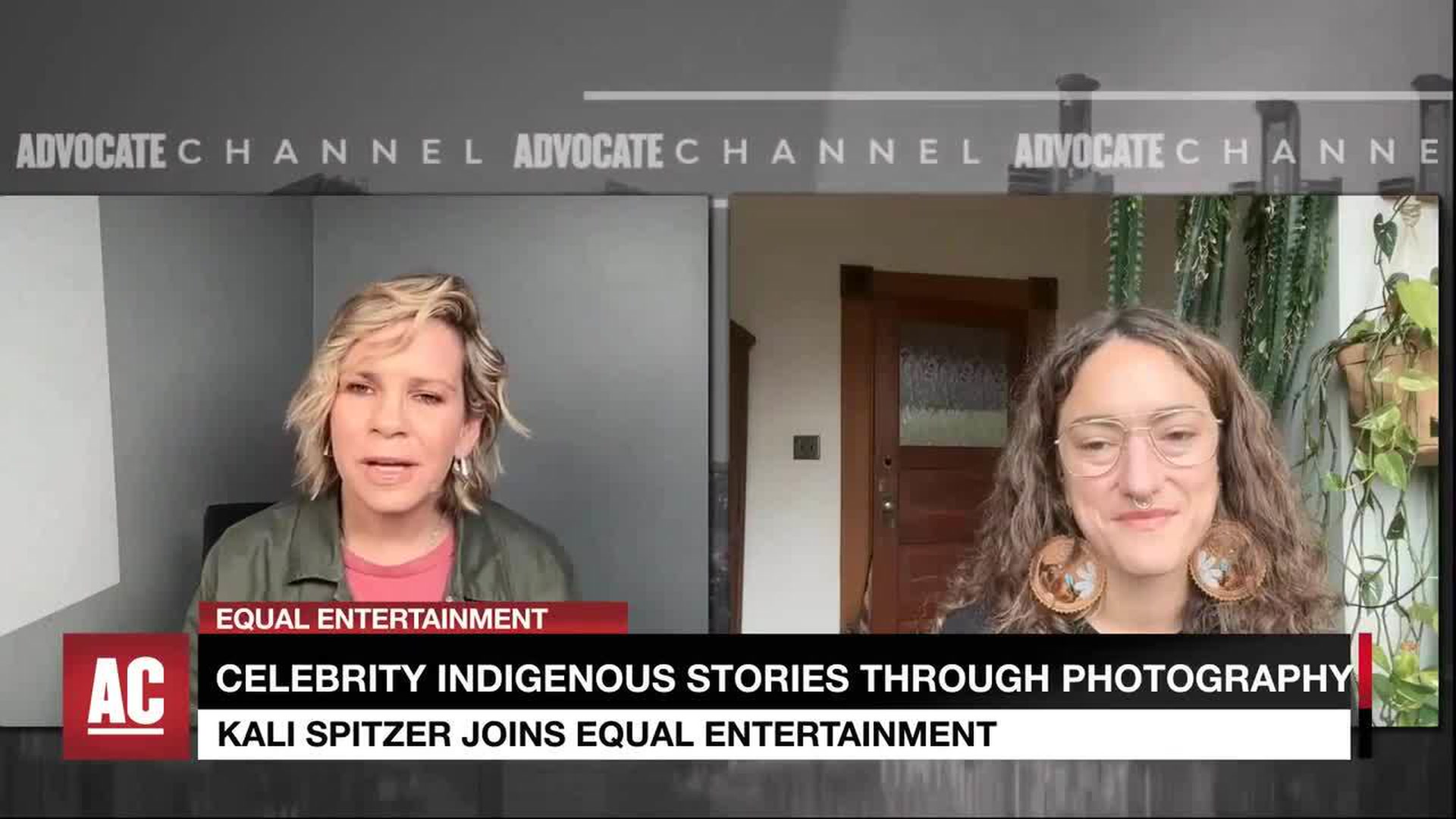
Video Source: Advocate Channel
- Native American Tribes Could Help Bridge the Gender Pay Gap. Here's How ›
- Minnesota Unveils New State Flag After Complaints of Racism From Native Americans ›
- ESPN Anchor Under Fire For Mocking Indigenous NHL Player's Name ›
- First Came Pride Bans. Now, the NHL Is Cracking Down on Cancer Support and Native Heritage ›







